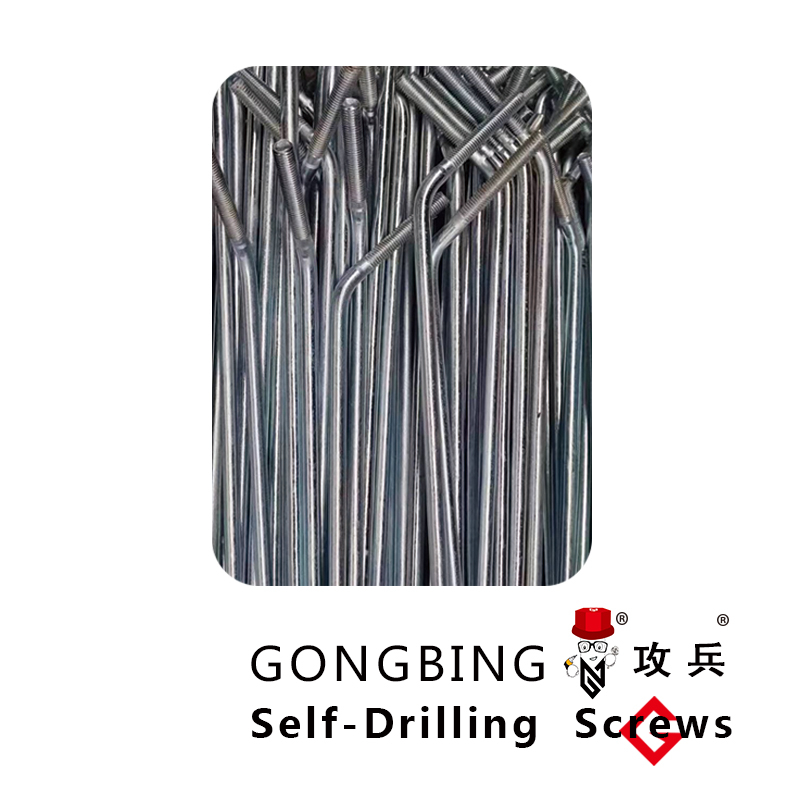plastic expansion anchor
Understanding Plastic Expansion Anchors A Comprehensive Overview
Plastic expansion anchors are widely used in construction and repair projects for their versatility, cost-effectiveness, and ease of installation. These devices are designed to secure lightweight fixtures to masonry, drywall, and various types of concrete surfaces. Unlike their metal counterparts, plastic expansion anchors are corrosion-resistant, making them an ideal choice for environments prone to moisture.
How Plastic Expansion Anchors Work
The operation of plastic expansion anchors is relatively straightforward. When a screw is inserted into the anchor, it forces the anchor to expand against the sides of the drilled hole. This creates a strong grip that securely holds the anchor in place. The installation process is simple first, a pilot hole is drilled into the substrate using a drill bit that matches the diameter of the anchor. The plastic anchor is then inserted into this hole, and as the screw is tightened, the anchor expands, locking it in place.
Types of Plastic Expansion Anchors
There are several types of plastic expansion anchors, each catering to different applications. The most common types include
1. Standard Expansion Anchors These are typically used in basic applications and are suitable for light to moderate loads. They are used mainly with drywall and light concrete.
2. Wing Anchors Designed for use in hollow walls, wing anchors feature wings that expand outward on the other side of the wall as the screw is tightened. This creates a robust holding power ideal for mounting heavier objects.
3. Self-Drilling Anchors These anchors can be installed without pre-drilling, making them a convenient option for fast installation, especially in soft materials.
plastic expansion anchor

Applications
Plastic expansion anchors are used in a variety of applications, ranging from hanging pictures and shelves to mounting cabinets and televisions. They are particularly effective for use in residential settings, including kitchens, bathrooms, and living areas, where securing lightweight fixtures is often required.
Advantages
One of the primary benefits of plastic expansion anchors is their resistance to corrosion, which enhances their durability when used in humid environments. Additionally, they offer a user-friendly installation process, making them accessible to DIY enthusiasts and professional contractors alike. Their lightweight nature makes them easy to handle, and they are often more affordable compared to metal anchors.
Considerations
While plastic expansion anchors are highly effective for lightweight applications, they have limitations. They are not suitable for heavy loads or extremely hard materials. For such situations, metal anchors or other anchoring systems may be more appropriate. It is also essential to choose the right size and type of anchor based on the load requirements and the substrate material to ensure optimal performance.
Conclusion
Plastic expansion anchors are a practical solution for a wide range of fastening needs. Their ease of use, resistance to corrosion, and adaptability to various surfaces make them a popular choice among builders and DIYers. By understanding their functions and applications, users can effectively utilize these anchors to enhance the durability and security of their installations. Whether you're hanging a picture frame or installing shelf brackets, plastic expansion anchors offer a reliable solution for many fastening challenges.
-
Weatherproof Plastic Expansion Anchors for OutdoorNewsJun.06,2025
-
Sustainability in the Supply Chain: Eco-Friendly TEK Screws ProductionNewsJun.06,2025
-
Load-Bearing Capacity of External Insulation FixingsNewsJun.06,2025
-
Double Head Bolts: Enhancing Efficiency in Industrial MachineryNewsJun.06,2025
-
Corrosion Resistance in Chipboard Screws: Coatings for Wholesale DurabilityNewsJun.06,2025
-
Butterfly Toggle Bolts : Enhancing Structural ResilienceNewsJun.06,2025
